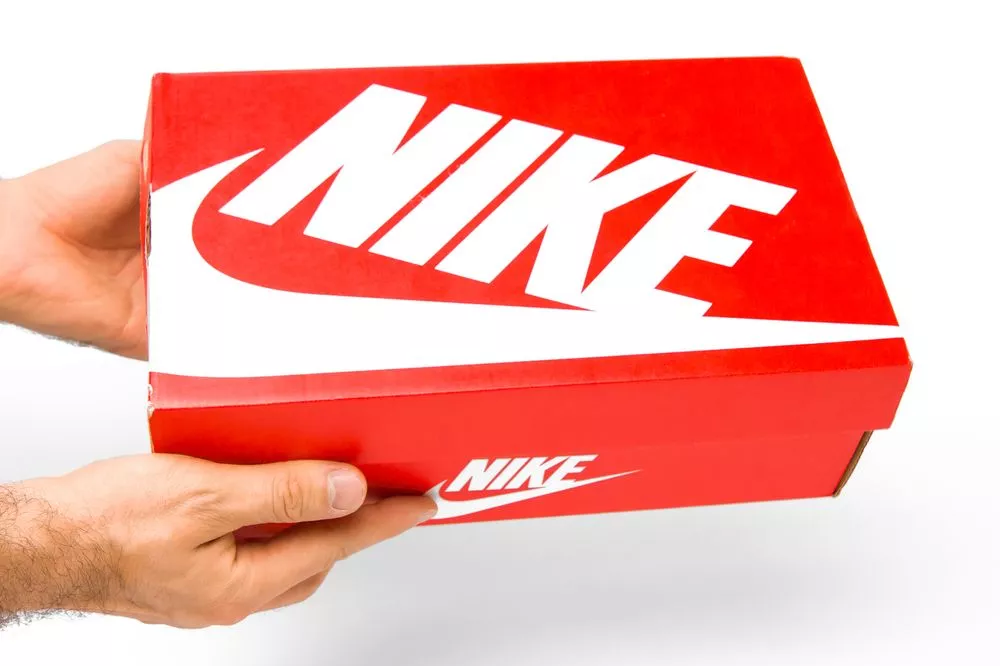Branding and Packaging: A Guide to Building Brand Identity
With branding, business leaders may set their company out from the competition. Branding covers every company facet—from the website and logo to marketing initiatives and customer support. It involves developing a distinctive name, symbol, design, or image.
Packaging is frequently the first tangible manifestation of a brand that a customer interacts with; because of this, branding and packaging go hand in hand. Packaging plays a significant role in attaining this goal of generating a consistent and memorable experience for customers as part of effective branding.
Packaging is a customer-facing extension of a company’s brand. It conveys important messages about the company and how it wants to be perceived. A product with a well-designed package may stand out on the shelf and leave a lasting impression on customers.
The following infographic summarizes the major factors companies should consider when designing their packaging and what branding and packaging are.

What is Brand Identity?
A company’s brand identity combines all the non-visual and visual elements it creates to communicate its image and values to its target market. It includes a logo, tagline, packaging, website design, and branding—but it also includes messaging, tone of voice, and customer experience.
Elements of Brand Identity
1. Logo

A logo is a graphic symbol that brands use to represent themselves. It serves as an emblem or a mark and appears on the brand’s packaging. The visual component makes it easier for customers to recognize and separate a product from its competitors.
A wordmark, symbol, icon, or both can represent a logo. A company can include its logo in packaging design, including printing directly on the goods or placing its logo on the package’s front or prime labels.
Some examples of famous logos include Nike’s iconic check or McDonald’s’ big, yellow ‘M.’

2. Color scheme

Brand packaging uses specific colors and color combinations to visually represent a company’s identity.
Brands can use color schemes to differentiate themselves from their rivals and to elicit various emotions, thoughts, and moods in the target audience. By choosing a color scheme consistent with their mission and message, brands can effectively convey their personality, ideas, and goal to consumers.
Regarding brand identity packaging, color schemes are vital for consistency and recognition. Brands such as Tiffany & Co. and Apple Inc. consistently use color to promote brand loyalty and recall.

3. Typography

Typography covers the font, size, color, and layout choices. Organizing and displaying words ensures the brand conveys the right message to customers. You can use typography to make the packaging stand out on the shelf, help customers understand the brand’s character, and strengthen your visual identity as a business.
Some examples of brands that have unique typography include Coca-Cola and FedEx.

4. Imagery
The term “imagery” refers to the visual elements in packaging design that communicate information, elicit an emotional response in the consumer, or represent the brand’s message or personality. Since imagery is crucial for packaging design, it can entice customers and communicate the product’s unique value.
Brands that utilize fantastic imagery in its branding is Oreo.

5. Messaging
Messaging uses words and other forms of expression on the brand’s packaging to convey a specific message to the target market. Brands could use taglines, slogans, and other written material to explain a brand’s values, benefits, and traits to potential buyers.
The power of messaging is crucial to branding and retail product packaging design since it can help a product stand out from its competitors and develop a stronger connection with the target market. Examples of brands with iconic messaging include Nike’s “Just do it.” and Apple’s “Think different.”
Developing a Brand Strategy
1. Defining the brand’s target audience
Communicating with clients more successfully and effectively benefits businesses. It is preferable to focus resources and efforts on a narrower target market to achieve faster growth and higher revenues.
Frequent target market research is important because it provides information on a brand’s perspectives, goals, and needs. For example, it would be wise to add recycling instructions for brands with a specific audience, such as environmentally conscious customers.
By utilizing this data, organizations can improve their offerings and messaging, reduce risk, and establish a solid rapport with their target market.
2. Establishing brand positioning
Brand positioning is a strategy to make the business stand out. It highlights what makes you unique so consumers can recognize the brand when they see you. Successful brand positioning fosters the development of strong brands that are memorable and trustworthy. It also increases consumer engagement and loyalty.
3. Crafting the brand message
Creating a message strategy that effectively delivers brand positioning to distinct target audiences is the next step in branding.
A brand must always maintain a consistent message and tone, but that message needs to be tailored to each audience. These audiences include prospective customers, workers, influencers, and partners. A company can effectively engage with its target audiences by building a thorough communications plan.
4. Identifying the brand’s unique value proposition
Brand awareness is the first step to building a successful business. A brand’s unique selling proposition (USP) differentiates it from the crowd. It is important to communicate your value to consumers—and once you have done that, you can build loyalty and success.
5. Start formulating a name, logo, and tagline
Remember that the brand is more than the name, logo, or tagline. They are part of the brand’s identity. Brands must evaluate their name, logo, and slogan based on how well they communicate rather than how much the partners enjoy them. Avoid the error of seeking internal consensus when circulating the new logo.
6. Implementing, monitoring, and correcting
This final step of the brand development process comes after brands create and implement the strategy.
Some notable questions to answer include:
- Has the strategy been implemented as intended?
- What happened to the objective measurements, such as the volume of searches and web traffic?
- How many new opportunities for collaboration, job applications, and leads were generated?
Only by closely observing the entire process can businesses ensure they obtain the correct results and make the necessary corrections.
Building a Strong Brand Identity Through Packaging
• Develop the brand logo

When customers create an emotional connection with a brand, they are more likely to buy from it again. Branding is important to a business’s success—and the best way to create those emotional connections is through a logo.
A powerful logo reflects the organization’s values, character, and mission—and it is important to design a top-notch one that represents the brand.
• Choose a color scheme and typography
How a brand’s typography and color scheme are designed can affect how customers perceive it. While the correct color scheme can elicit associations and feelings with the goods, typography can communicate a brand’s personality and ideals.
For instance, the red and white color scheme of Coca-Cola evokes feelings of excitement and vigor, while the brand’s distinctive typeface suggests tradition and eternal appeal. Apple’s iconic design of the apple emblem is subtle and exudes class and luxury. Its clean, modern typeface represents the company’s emphasis on innovation and simplicity.
These examples demonstrate how thoughtfully selected color schemes and typography can strengthen a brand’s identity and have a long-lasting effect on consumers.
• Design packaging that reflects the brand identity
Packaging design is a powerful tool for a brand to connect with its target audience and convey its identity. Research shows packaging is a crucial silent and overt promotional tool in modern marketing communications.
Choose materials and shapes consistent with the brand to make the packaging recognizable. Supporting the brand’s image and values through packaging draws in new clients and fosters consumer loyalty. You can stand out from competitors by investing in packaging design that matches the brand identity.
• Work to produce captivating imagery
Consistency in image selection and editing is crucial for marketing and promotional efforts. You should create branded presets and filters and ensure that all packaging images adhere to the brand’s principles. A popular technique for building brand identification is to use eye-catching images.
Old Spice’s witty and amusing campaign has been a hit for decades. It features characters in peculiar situations, and the theme has come to represent the company’s essence. Their unique graphics aid in differentiating them from rivals and creating a solid and enduring brand identity.
Old Spice has seen tremendous success with its “The Man Your Guy Could Smell Like” campaign. The company’s initial target was a 15% increase in body wash sales, but by May 2010, sales had almost tripled to 60%.
• Ensure messaging is consistent with the identity
Brand consistency is key to effective marketing. A company can communicate with its target market using consistent messaging across all its touchpoints and channels. Customers start to link specific words, phrases, and tones with the brand, contributing to brand recognition and trust development.
A unified message is important for a business because it prevents the company from misleading its customers or contradicting itself, which could be quite off-putting to them. It enhances a brand’s reputation and increases customer product recall.
How to Leverage Branding and Packaging Effectively
1. Ensure brand consistency across all channels

A company’s branding is like a customer’s first impression. It distinguishes you from the competition and may facilitate a customer relationship. Customers can instantly remember if a company maintains consistent branding throughout all marketing and packaging materials.
Consistency builds trust. It increases customer confidence, making a company stand out from its rivals. A corporation can communicate its values, mission, and USP through consistent branding.
2. Measure the success of branding and packaging efforts
Brands can keep an eye on their branding and packaging projects by monitoring key performance metrics. It includes sales, customer satisfaction, and brand recognition. Once you have identified areas of improvement, it becomes easier to make necessary adjustments to the plan.
3. Evolve the brand identity over time as necessary
It is important to evaluate whether or not branding and packaging methods are effective when producing the desired results. It can help businesses make data-driven decisions to optimize their branding and packaging strategy by focusing on critical indicators such as brand awareness, customer engagement, and sales success.
4. Create products that serve a specific purpose
A strong brand identity can be created by making items with a distinctive customer value proposition and differentiating the company from its rivals. Brands can better develop products that address issues and provide unique solutions when they are aware of the needs and preferences of their target market.
Businesses should design products with a purpose. It gives consumers the impression that they are purchasing something more than a simple item, making them more likely to continue with the product.
5. Utilize good unboxing experiences
Good unboxing experiences can help firms build their reputation and attract more devoted customers. Customers are more likely to associate a company with good feelings when they have a memorable and joyful unpacking experience, which promotes brand awareness, advocacies, and repeat business.
Building a Strong Brand Identity through Packaging

Packaging is not just about making the product look nice. Another important goal is ensuring customers understand exactly what they purchase from you.
The article emphasizes the value of packaging and branding in forging a distinctive brand identity that appeals to consumers. It offers advice on things such as analyzing the effectiveness of branding and packaging efforts, making items that have a clear purpose, and making good use of unpacking experiences.
Combining the power of branding and packaging takes branding to the next level. Speak with packaging experts from Meyers to bring packaging solutions to life. Get in touch with Meyers right away for business printing services.

